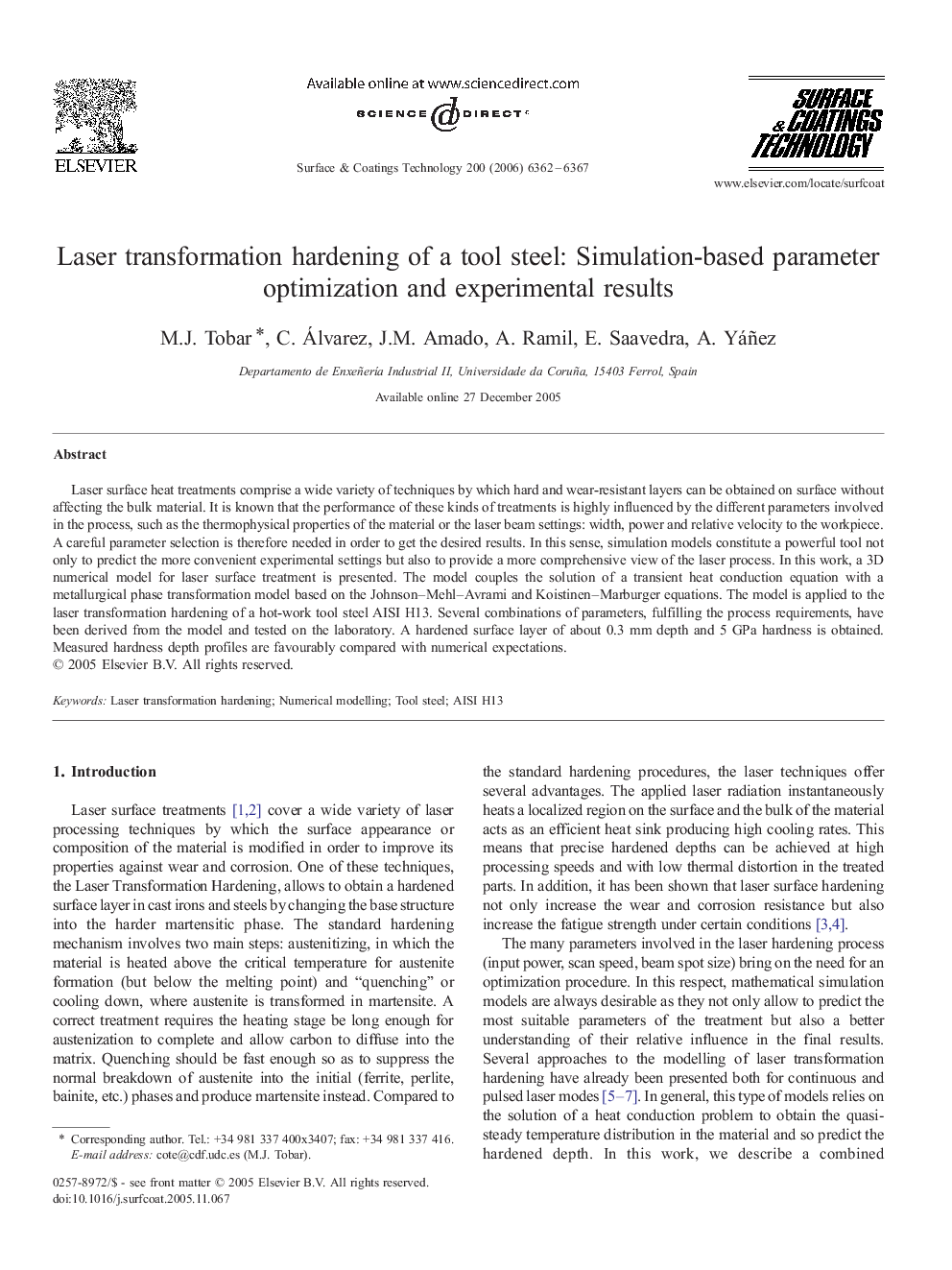| Article ID | Journal | Published Year | Pages | File Type |
|---|---|---|---|---|
| 1661920 | Surface and Coatings Technology | 2006 | 6 Pages |
Laser surface heat treatments comprise a wide variety of techniques by which hard and wear-resistant layers can be obtained on surface without affecting the bulk material. It is known that the performance of these kinds of treatments is highly influenced by the different parameters involved in the process, such as the thermophysical properties of the material or the laser beam settings: width, power and relative velocity to the workpiece. A careful parameter selection is therefore needed in order to get the desired results. In this sense, simulation models constitute a powerful tool not only to predict the more convenient experimental settings but also to provide a more comprehensive view of the laser process. In this work, a 3D numerical model for laser surface treatment is presented. The model couples the solution of a transient heat conduction equation with a metallurgical phase transformation model based on the Johnson–Mehl–Avrami and Koistinen–Marburger equations. The model is applied to the laser transformation hardening of a hot-work tool steel AISI H13. Several combinations of parameters, fulfilling the process requirements, have been derived from the model and tested on the laboratory. A hardened surface layer of about 0.3 mm depth and 5 GPa hardness is obtained. Measured hardness depth profiles are favourably compared with numerical expectations.
